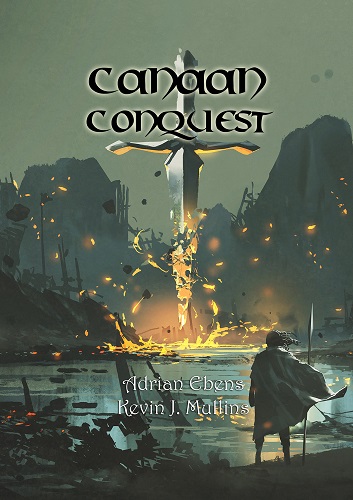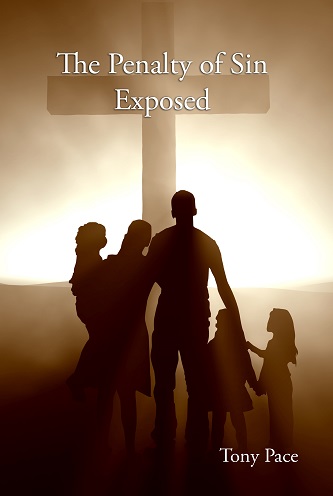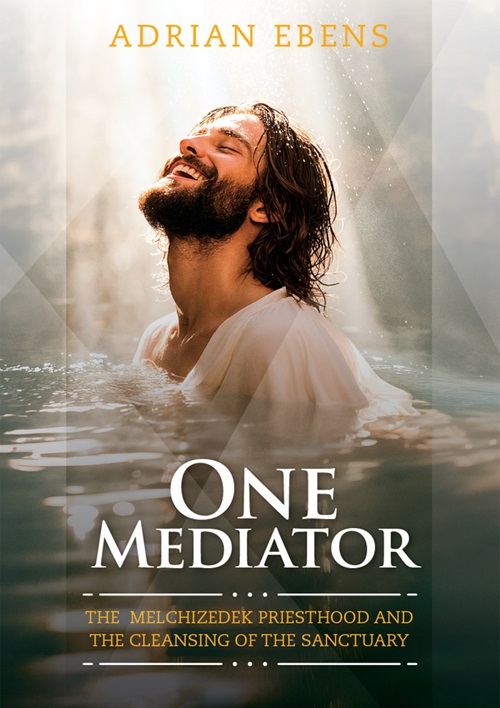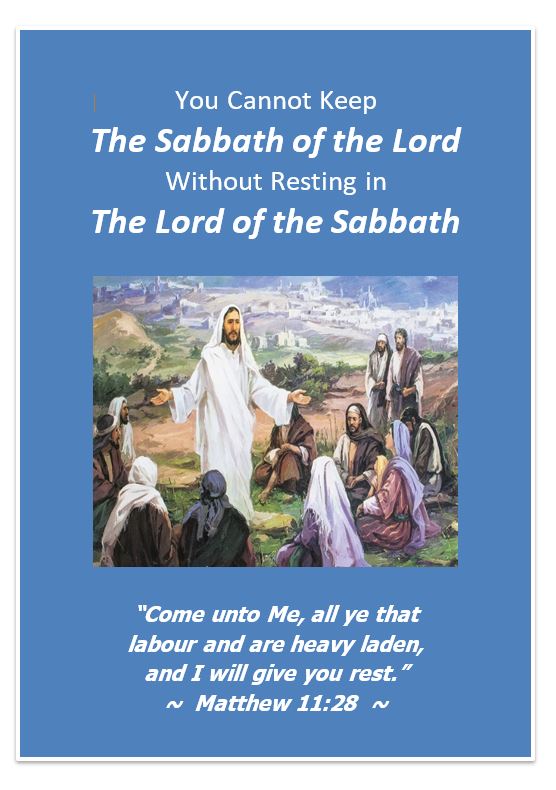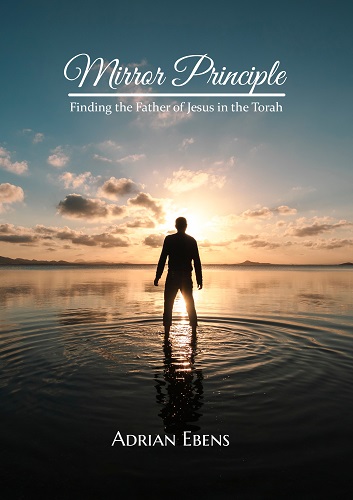Examples 5-7 of The Two Covenants Study: (Continuation of "Married to Another")
“The covenant of mercy was made before the foundation of the world. It has existed from all eternity and was called the everlasting covenant.” 7BC 934
“As the Bible presents two laws, one changeless and eternal, the other provisional and temporary, so there are two covenants. The covenant of grace was first made with man in Eden, when after the Fall there was given a divine promise that the seed of the woman should bruise the serpent's head. To all men this covenant offered pardon and the assisting grace of God for future obedience through faith in Christ. It also promised them eternal life on condition of fidelity to God's law. Thus the patriarchs received the hope of salvation.” PP 370
Introduction: This is continuation of Part 1 of 3 of an in-depth study entitled "Married to Another". It presents seven different examples, characteristics, and love languages of the two Covenants. The last Biblical “example” is illustrated by marriage and remarriage. Hence the title “Married to Another” (Rom. 7:3,4). Many more examples could come to mind from Scripture however, I have just included a small sample that I feel clearly serve the purpose of illustrating the nature of either the old covenant, the new covenant or both.
______________________________________________________________________________________
Example 5: - The faithful Roman Centurion
The centurion answered and said, Lord, I am not worthy for you to come under my roof: but speak the word only, and my servant shall be healed. – Matt 8:8
Now we will consider the faith of a man who experienced the everlasting covenant to whom Jesus – “the Prince of the Holy Covenant” – encountered and commended. The self-distrust and firm belief exemplified in the Roman army officer are two essential qualities for entering the New Covenant. The gospel of Matthew recounts the story of a Roman centurion whose servant was very sick. One day as Jesus, the great Teacher, entered into Capernaum a Roman approached Him to present his case (Matt 8: 5-10). The Teacher responded decidedly and positively with, “I will come and heal him”. The man didn’t feel worthy enough for the Teacher to come under his roof but said, “speak the word only, and my servant shall be healed” (Matt 8:8). He recognized the great Teacher/healer possessed extraordinary divine authority – more authority than he possessed over 100 Roman soldiers. The Centurion’s response was an expression of faith, an indication of a strong belief that the Teacher marveled at and publically commended. Jesus described this non-Jew, non-Seventh-day Adventist, as a man possessing “great faith”. Jesus did not find this kind of faith amidst the Seventh-day [first] Adventists of Israel (See Matt 8:8, 5-10). And what was his faith based on? Implicit trust in God’s Word: - “the Word only”. Unlike the proud self-righteous Jews, the Roman officer humbly acknowledged his own unworthiness and FULLY believed there was ultimate authority and life-changing healing power in God’s Word (See Matt 8:9). (Keep in mind, that faith, firm belief, humility and self-distrust are essential character attributes of the New Covenant.) He believed if Christ said it, it was so. The Word of the Living God is the rock we will build upon (Luke 6:48; 1 Cor. 3:10). Obviously this study contains more than just Scripture. I do think however, you would have found that my comments harmonize with the Scriptural references. The study was not built on the shifting sand of human speculation (Luke 6:47-49). We can believe whatever God’s Word says concerning the Covenants is so. It is not make-believe gospel fiction it is a definite reality. (See Gen 15:6; Isa 55:11).
In my own experience of meeting the non-churched, when I have shared truth from God’s Word I have sometimes marveled at their faith and acceptance of it. They recognize their unworthiness and seem so free of theological traditions, inhibitions and resistance. I have felt that, like in the case of the centurion, some of these people manifest greater faith than many of us in spiritual Israel. It could be said, “Truly I have not found so great faith no not in all Israel”. It reminds me of the illustration Jesus drew upon in describing the reception of truth. He said; “And no one puts new wine into old bottles [wineskins]; if he does, the wine will burst the skins, and the wine is lost, and so are the skins; but new wine is for fresh skins." (Mark 2:22).
Life Application: This is saying, the pure unfermented truth of the gospel (the new wine) is best imparted to people (new skins/vessels/bottles) whose hearts and minds are open and willing to hear and retain the truth (2 Cor. 4:6,7; John 2:6,7,9; Luke 11:31,32; 21:31,32). It is more likely to be preserved when shared with those whose hearts are not dried up contracted and stubbornly closed due to years of influence from misleading erroneous traditions – and I hope and pray that is not any of us! A huge part of the everlasting Covenant is saving grace. “Not by works of righteousness which we have done, but according to his mercy he saved us, by the washing of regeneration, and renewing of the Holy Ghost . . . be careful to maintain good works.” – Titus 3: 5, 8. In this article I have affirmed and repeated “constantly” (Titus 3:8) the essence of the two Covenants: “We are saved by grace through faith, and not of ourselves . . . . not of works lest any should boast” (Eph. 2:8). Through the renewal of the Spirit (new birth) we are “created in Christ Jesus unto good works” (See Eph. 2:7-10). We are not saved by “works”, but we are to “maintain good works” and we should clearly understand the difference.
___________________________________________________________________________________________
Example 6: - Absentee school kids
There are two aspects of the Old Covenant. Firstly, it served to illustrate the whole plan of salvation under shadowy types as a God-ordained temporary system to point out moral sin (Rom 3:20; 5:20). Secondly the eternal law contained in the Old Covenant Sanctuary is intended to guide, protect, preserve and bless us (Matt 5: 17-19; Psm. 119:142; Rev 11:19). Yet when it was broken, which was too often the case, it became what the apostle Paul referred to as “a schoolmaster” to bring us to Christ. Before Christ’s beloved lady entered the Covenant of faith she oftentimes manifested a lack of moral and relational maturity and instead behaved like little absentee (disconnected/distanced) children. These kids needed to be disciplined by a truant officer and guided back to the Teacher.
But before faith came, we were kept under the law, shut up unto the faith which should afterwards be revealed. Wherefore the law was our schoolmaster to bring us unto Christ,
that we might be justified by faith. But after that faith is come, we are no longer under a schoolmaster. For ye are all the children of God by faith in Christ Jesus. – Gal 3:23-26
“Kept under the law”: Firstly, it is important to recognize in the original Greek, the word “kept” in the passage is not altogether a negative expression. It means, “to guard, to protect by military guard, either to prevent hostile invasion or to keep the inhabitants of a besieged city from flight . . to keep by watching and guarding to preserve one for the attainment of something”. The law protects us from the enemy and serves to preserve us for the attainment of the promised inheritance. So even though a person may be legalistic in their Christian experience, because he or she respects God’s law, and is conscious of its claims, he or she will be somewhat protected and guided (kept) by it. Yet “after faith is come” into one’s life, when they start living IN Christ, they are then “no longer under [under the discipline and guidance of] the *schoolmaster”. This is not to say Christians no longer revere or remain subject to God’s law. No, no! It means they are no longer enslaved to it, no longer held morally captive under the continual condemnation shame and guilt of a broken law/broken Covenant.
Greek Meaning of *Schoolmaster: (G3807 paidag?gos) “a tutor i.e. a guardian and guide of boys. Among the Greeks and the Romans the name was applied to trustworthy slaves who were charged with the duty of supervising the life and morals of boys belonging to the better class. The boys were not allowed so much as to step out of the house without them before arriving at the age of manhood.”
They are now under grace – forgiving and empowering grace, under the liberating “law of the spirit of life in Christ Jesus”. They find “delight” in His law and in His strength they obey it (Gal 3:25; Rom 6:14)
________________________________________________________________________________________
*Identifying the schoolmaster: In 1888 there was much confusion and considerable debate over exactly what the schoolmaster in Galatians referred to. Some emphatically insisted it was the ceremonial law and others, A.T. Jones particularly, suggested it was the moral law. Interestingly Ellen White said it was “both”. At another time she said the schoolmaster was “especially the moral law”. (Sunnyside, Cooranbong June 6, 1896.) I accepted the word of inspiration here yet in my own mind I couldn’t understand why she, along with Jones came to that conclusion until one day the lights came on. I read a S.O.P. quotation that connected the schoolmaster with the sacrificial service way back from Abel to Christ’s day. Then it all began to make sense to me. I began to see the moral law in the context of the desert tabernacle/sanctuary and in that context the moral law was a broken law/covenant (sin/disconnection)– and that’s what Christ death took care of (Isa 59:2). It reconciles us to God and takes care of the sin problem. Sin - the consequential result of disconnection from God- is a schoolmaster to bring us to faith in Christ: “The law is broken but cannot pardon the transgressor. It is our schoolmaster, condemning to punishment. Where is the remedy? The law drives us to Christ, who was hanged upon the cross that He might be able to impart His righteousness to fallen, sinful man and thus present men to His Father in His righteous character.” - Ellen G. White, 1SM 341.
The moment we disconnect from Christ and start depending on our own righteousness, (Rom. 10:3), like many of the Israelites, we instantaneously move back into the Old Covenant experience –sometimes subconsciously! When we disrespect or hurt our neighbor in any way, we come back under the schoolmaster. In direct or subtle ways the people we offend might directly or indirectly let us know of our neglect or offense. This brings shame and guilt to our conscience and serves as a schoolmaster! Perhaps to our shame and embarrassment, people sometimes pull us up when we fail to represent Christ in word or deed. They notice our inconsistencies when we happen to be selfish, momentarily disconnect ourselves from God and neglect to think and care for our neighbor’s welfare in the Spirit of Christ-like love. As born-again Christians we may at times disconnect from God or others and fall, but in such cases God does not cast us off. We are to confess our sins to God or others we may have wounded and lovingly reconnect with them! “He is faithful and just to forgive us our sins and cleanse us from all unrighteousness” (1 John 1: 9). Under the influence of the New Covenant, with God’s infinite mercy, love and forgiving empowering grace, the trend of our old life and habits are forsaken and radically changed (2 Cor. 5:17; Gal. 6:15; Rom. 6:4; 8:11; 12:2).
The Purpose of God’s *Schoolmasters: The broken 10 Commandment law served “especially” as a schoolmaster. But there was another schoolmaster in addition to this - the ceremonial (sacrificial) law.
“Christ was the foundation for the whole Jewish economy. The death of Able in consequence of refusing to accept God’s plan [gospel/covenant] in the school of obedience to be saved by the blood of Jesus Christ typified by the sacrificial offerings pointing to Christ. Cain refused the shedding of blood which symbolized the shedding of blood for the entire world. This whole ceremony was prepared by God, and Christ became the foundation of the whole system. This is the beginning of its work as the schoolmaster to bring sinful human agents to a consideration of Christ the foundation of the whole Jewish economy.
All who did service in connection with the sanctuary were being educated constantly in regard to the intervention of Christ in behalf of the human race. This service was designed to create in every heart a love for the law of God, which is the law of the kingdom.” – Ellen G. White, Manuscript Release -3 Oakland, California, Cir. 1900
Life Application: The continual shedding of blood of harmless helpless feeling creatures (lambs, rams, goats, calves, bullocks etc.) taught people with sensitive consciences and eyes to see and ears to hear, the high cost of sin: - it cost life! The nature of the transgression will determine the degree of emotional consequences such as depression, unrest, guilt, shame and regret. Rom 6:23. (For us today, the wages of sin is still all of the above and eventual death, however Christ has bridged the gulf and through His sacrifice given ALL both sinner and saint present probationary life (John 3:16; Rom 5:18; 1 Tim 4:10; Rom 5:6, 10). We are no longer under condemnation. Why? Because condemnation is equivalent to shame and guilt and shame and guilt is the result of a broken law. So when we come to Christ we are “delivered from the law”(Rom. 7:6) – not “the law of liberty” of course but “the law of sin and death”! We are no longer under the law of condemnation (Rom. 8:3; John 3:17; 8:11) no longer “under the curse of the law” (Gal 3:10,13), no longer under “the law of sin” (Rom 7:8, 23, 25; 8:2) and therefore no longer constantly under the guidance, discipline and correction of the schoolmaster. Now we are under someone greater than the schoolmaster, we are “under grace” (Rom. 6:14,15), under the leading and guidance of Christ, the great Teacher of righteousness, friend, Savior and “everlasting Father” of our redemption. Now they are not afraid of the schoolmaster (the law) but get along much better with him and his wisdom and counsel pointing to the great Teacher is written in their heart.
When children have a different motive for school, when they love and respect their teacher, they are no longer treated like naughty little girls and boys that wander off and wag school and need the truant officer to guide them back to the teacher. As God’s professed children, we may have wondered off from the school of Christ and been led into sin. But the purpose of the schoolmaster (“especially the moral law”) along with the convicting Holy Spirit, are there to quicken our consciences (John 16:8) and bring us back to faith, back to Christ, back to the school of righteousness. We are now at the feet of the Master - Christ the great Teacher of righteousness and day-by-day grow in love and grace.
For many a good reason it was the will of God, under His “eternal purpose”, to bring in the New/Everlasting Covenant of righteousness Psm. 119:142; Dan 9:24; Eph. 3:11. As we have been repeating, it was generally the case that in the Old Covenant people tried, in and of themselves, to obey God and live righteously (Luke 18:9). This of course always resulted in failure and disappointment (Heb. 8:8; Ex. 19:8; Gal. 2:16, 3:2, 5). That’s why the apostle Paul used strong perhaps exaggerated terms to make a point. He stated that the law (broken law) “worketh wrath”, “slays” the guilty and “killeth” and leads the guilty to be “cursed” or separated from God (See 2 Cor. 3:6; Rom. 4:15; 7:13; Gal 3:10).
Run, John, run, the law commands?But gives us neither feet nor hands,
Far better news the gospel brings:?It bids us fly and gives us wings
– John Bunyan (1628-1688)
When we are IN Christ (synonymous with Christ is IN us) God’s principles and laws are seen and felt in a different light: “Thy testimonies also are my delight and my counselors” (Psm. 119:24) they bless the obedient and function as a lamp and a light to guide in the way of life. (James 1:25; 2:12; Prov 6:23)
_____________________________________________________________________________________
Example 7: - Romans chapter 7, From marriage to remarriage
Now for the final example. So far we have considered the Covenants as illustrated by 1) - Adam and Eve. 2) - Cain contrasted with Able and Noah contrasted with Babylon. 3) - Abraham’s family during unbelief, correlating Mount Sinai. 4) - The old covenant experience manifest at Mount Sinai. 5) - The faithful Roman Centurion. 6) – Absentee School Kids.
Now we will explore illustration number 7 - Romans Chapter 7: The illustration of marriage and remarriage. The apostle Paul explicitly defines the nature of the two covenants in a daring way in Romans 7:1-6. He likens the Old Covenant to a horrible marriage experience and the New to a meaningful and intimate one brimming over with other-centered love.
Do you not know, brethren--for I am speaking to those who know the law--that the law is binding on a person only during his life? Thus a married woman is bound by law to her husband as long as he lives; but if her husband dies she is discharged from the law concerning the husband. Accordingly, she will be called an adulteress if she lives with another man while her husband is alive. But if her husband dies she is free from that law, and if she marries another man she is not an adulteress. Likewise, my brethren, you have died to the law through the body of Christ, so that you may belong to another, to him who has been raised from the dead in order that we may bear fruit for God. While we were living in the flesh, our sinful passions, aroused by the law [the law of sin], were at work in our members to bear fruit for death. But now we are discharged [delivered KJV] from the law [the law of sin], dead to that which held us captive, so that we serve not under the old written code but in the new life of the Spirit. – Rom 7:1-6
Here the apostle Paul uses a clever illustration most adults can identify with – especially those who are currently in or have once been in a physically or emotionally abusive marriage -- to make a point. He compares the Old Covenant to a horrible/broken marriage and the New to a wonderful marriage. He likens a failing marriage to a slavish Christian experience. He employs the figure of marriage (the union of two people - husband and wife) to illustrate the legalistic Christian’s union with “the law of sin” (See also Rom 7: 14-23).
It is important to realize the “woman” or “lady” mentioned in the above passages is not a worldly lady by any means but actually religious one! (Paul begins the illustration by saying “I speak to those that know the law”, in other words this lesson applies to the Jewish Christians and NOT the gentiles.) The woman represents God’s professed people – the bride, the church (Isa. 54:6; 2 Cor. 11:2; 2 John 1:1,5) – only in this instance she is emotionally disconnected and her marriage is purely legalistic. (Legalists may appear to have a happy face on Sabbath and be diligent in keeping reforms, Bible study, outreach and in church attendance etc. but beneath the religious facade they are empty and miserable! In the context of sin there are only three kinds of people in this world. 1) Willing slaves. 2) Unwilling slaves. And 3) Those who are free!! It is generally the case that worldlings are willing slaves. They freely indulge in sin. Professed Christians on the other hand are often unwilling slaves. They sometimes know they shouldn’t think, act or behave in certain ways but without a vital connection with God they are powerless to do otherwise. “Free people” on the other hand are those whom Christ has set free from condemnation and empowered their lives. (See John 8:33-36; Gal 5:1; Heb. 2:15; 2 Pet 2:19)
In the above example, the woman is married to the type of tyrannical man that makes her life feel very unsatisfied and miserably enslaved. (This “first husband” represents the law WITHOUT Christ - the judicial side of the 10 Commandment law that the apostle refers to as “the ministration of condemnation” or “ministration of death” which was “written and engraven in stones”. (2 Cor. 3:7,9). More specifically this is a broken law - “the law/principle of sin” (a task master) or the first Adam’s sin nature we are all naturally united to. (Rom 7:25; 8:2). When we are bound to this law, like the woman we feel dissatisfied and miserably enslaved. That is the law we need to be “delivered from”. After the sinful carnal mind/character is crucified, the woman (us) is at liberty to marry another but not until then (Rom 6:1-22; 2 Tim 2:11; Gal 2:20; 5:24). One day while she encounters “another man” (who represents Christ the second Adam), her heart’s desire is awakened but she cannot marry him while “her first husband is living”. After she is almost suicidal and can take no more, she secretly and somewhat shamefully wishes her “first husband” were dead! She then knows she could be “free to marry another”! (Please don’t take this aspect of the allegory literally ok?!!!)
One day in sorrow and repentance of her unwise decision in marrying this man, she cries out to God for deliverance. And that’s the turning point where the old is past and “all things are become new” (2 Cor. 5:17). Now unlike the woman, when we were born we had no choice whatsoever in what we inherited and later became married/enmeshed to. Some people here might say, well that’s unfair”. Yes it maybe. However, it would be more unfair without God’s provisional gospel of moral restoration. And Satan claims that salvation is unfair (Zec. 3:1-8; Jude 1:9,10).
Life Application: So the question is, how can she/we get rid of the first husband? Legally she/we can’t! However her/our new future husband (Christ) can. Around 30 AD He absorbed into His sinless divine/human nature all the sinfulness of this old representative man of sin and crucified him at Calvary! (See Rom 6:6; Eph. 2:15; 1 Pet 2:24; 2 Cor. 5:21). And the point is, when He died, she (we) died with him because the two had become “one flesh.” The good news is Christ raises her, not him, in newness of life and chooses her to be His spiritual beloved bride (Rom 6:3-6; 2 Cor. 11:2). By faith she must “believe” that her old man is now dead and begin to walk in newness of life – the law of the spirit of life in Christ Jesus. (See Rom 6:11) This is the work of justification.
None other but God can remove the first Adam (the inflexible “law of sin and death”) from her/our life. Christ crucified the first Adam’s sin nature/character at the cross and through His Spirit supernaturally imparts His new/divine nature/character to us – His lady, His church. (Rom. 6:1-11; 2 Pet. 1:3,4). This second man she meets (“the messenger” and “Prince of the Covenant”) is her High Priest-King, Teacher, and loving Savior. He forgives, restores and cleanses her and becomes her new husband and she becomes His chosen “lady”, and His spotless bride. (Dan. 11:22; Mal. 3:1; Jer. 31:32; Isa 54:5; Eph. 5:22-28; Eze. 16:8). Then the law becomes spiritual. “The law of the spirit of life in Christ Jesus” has set her “free from the law of sin and death” (Rom 8:3,4).

